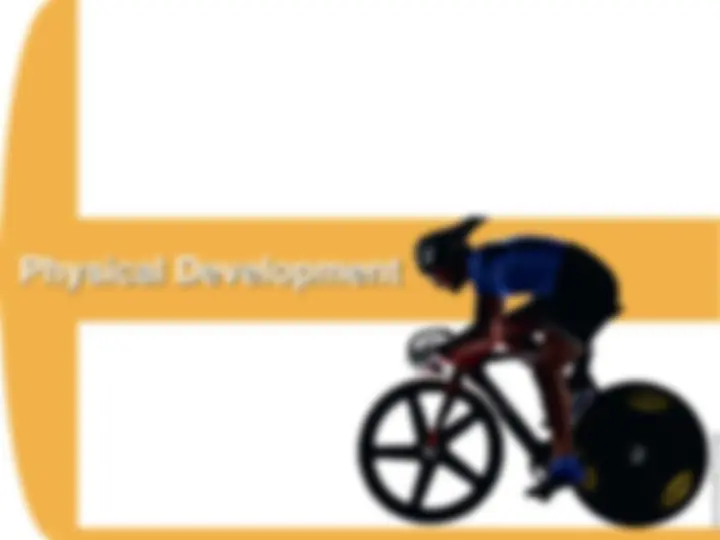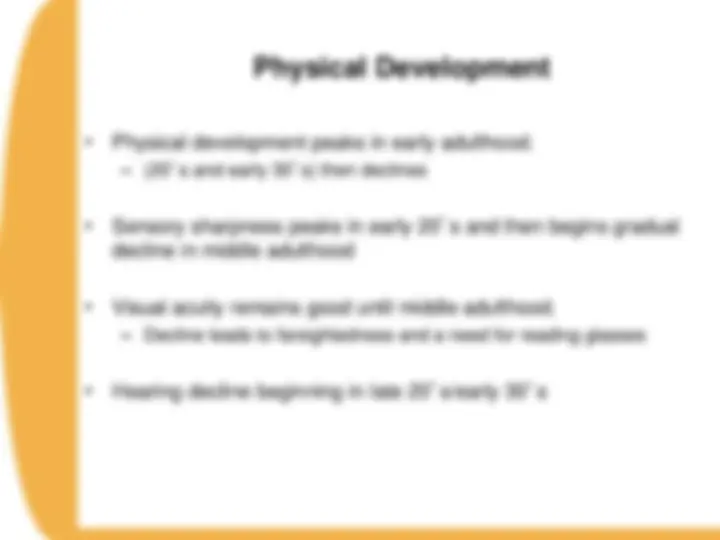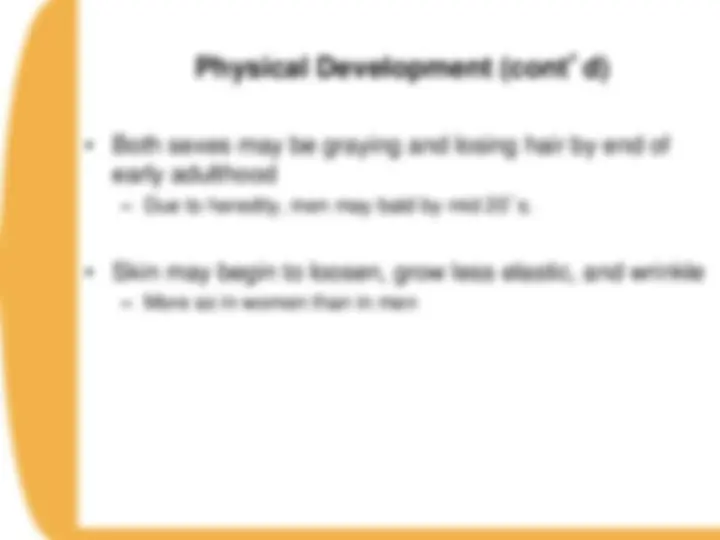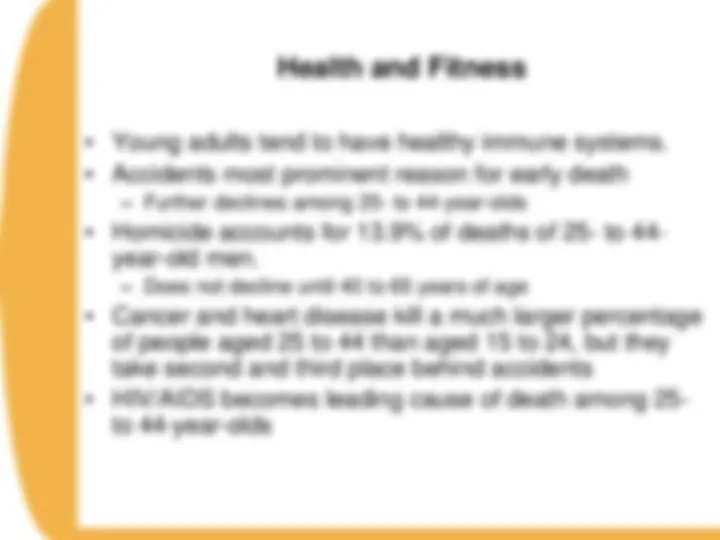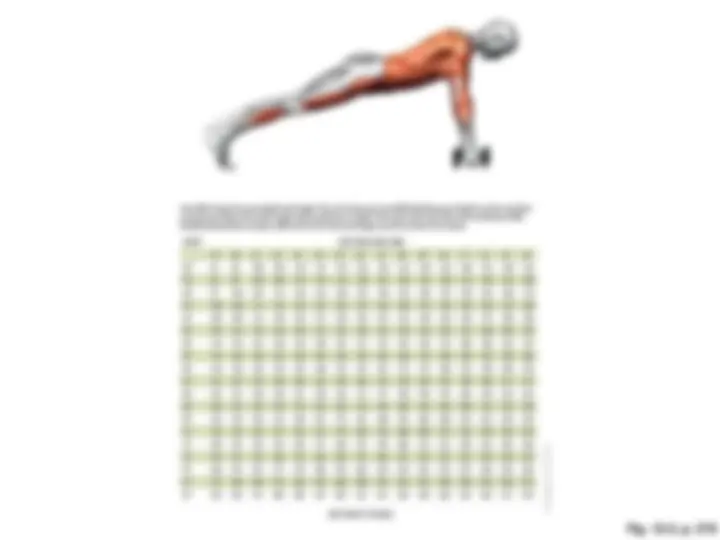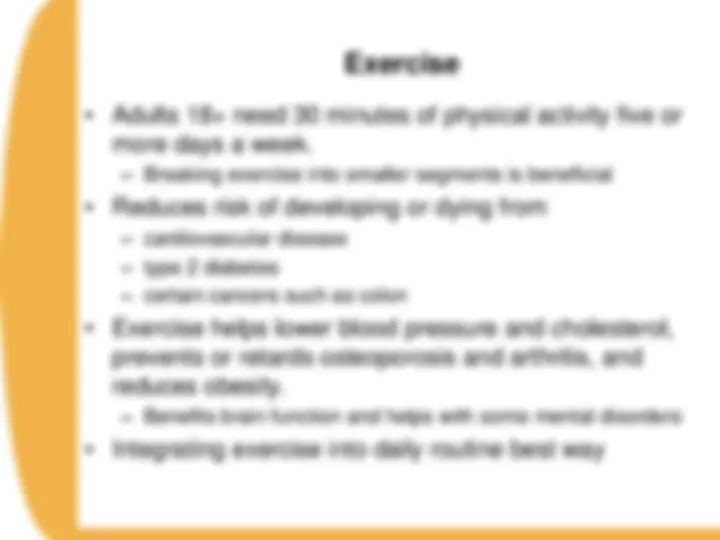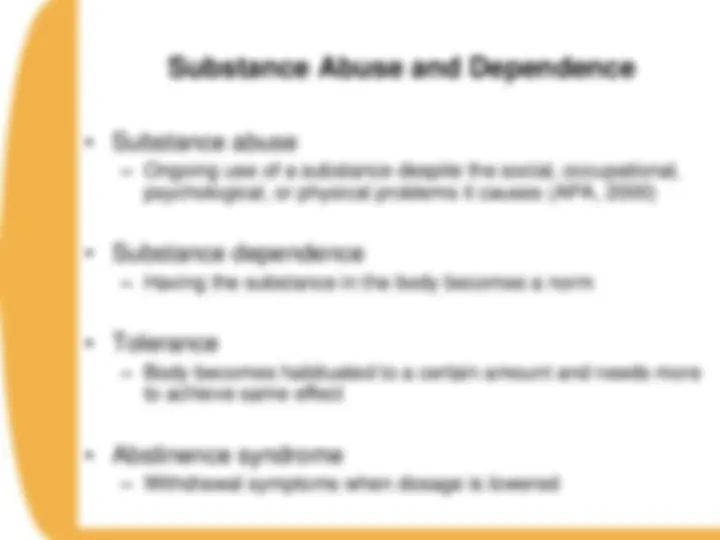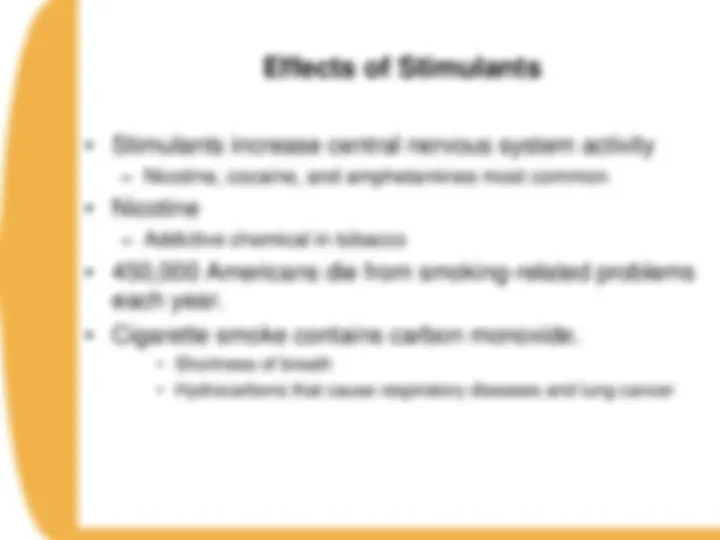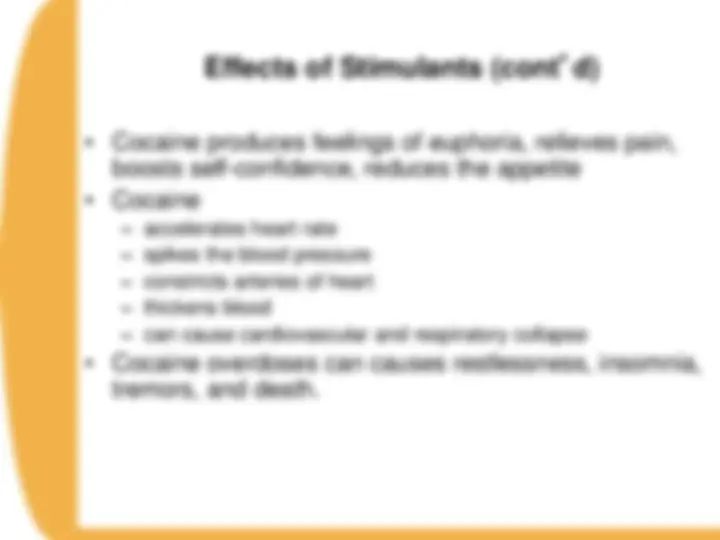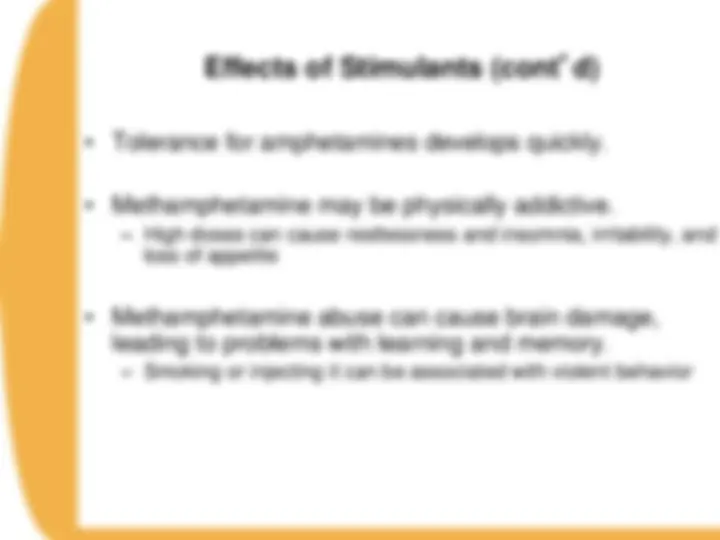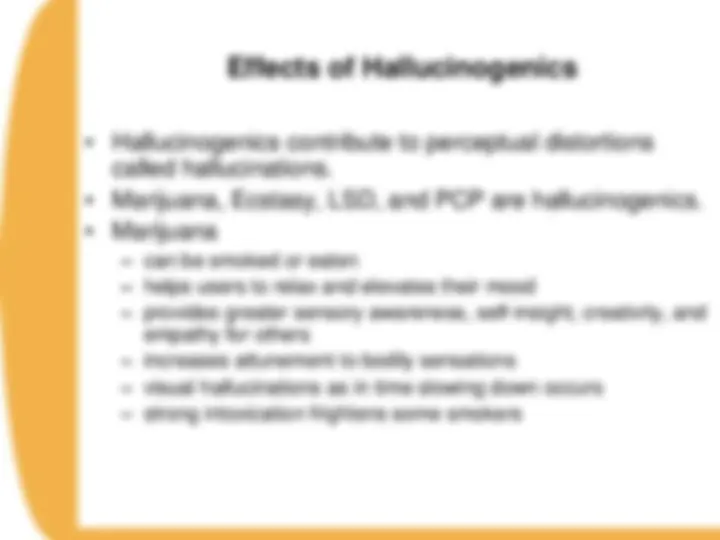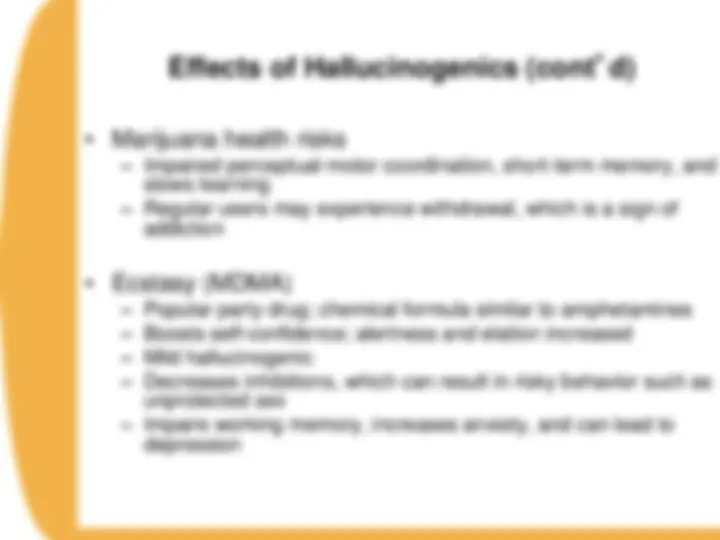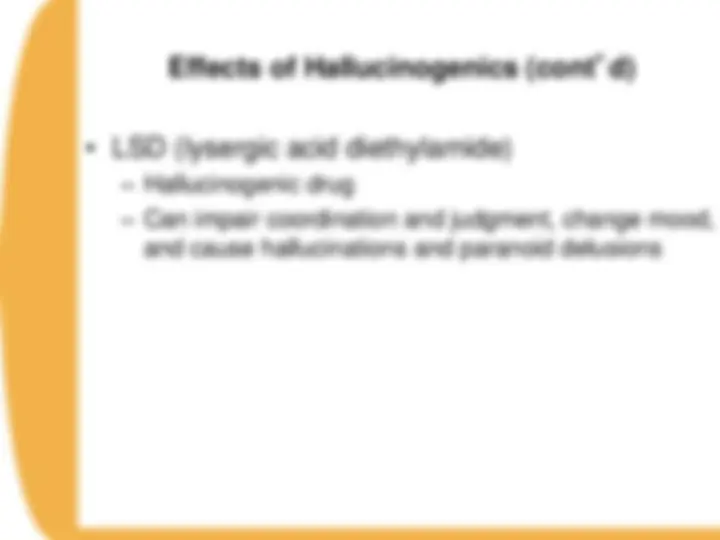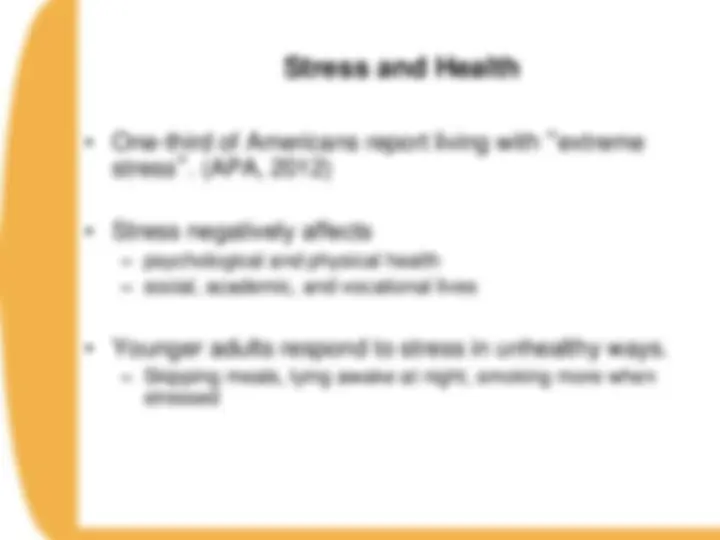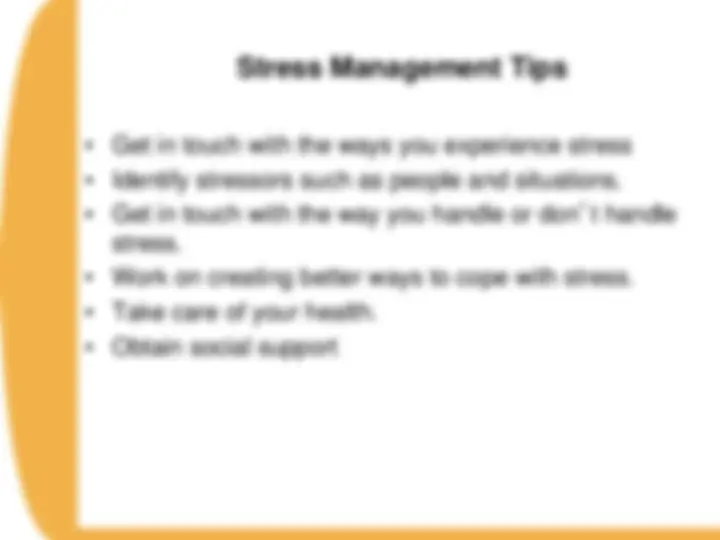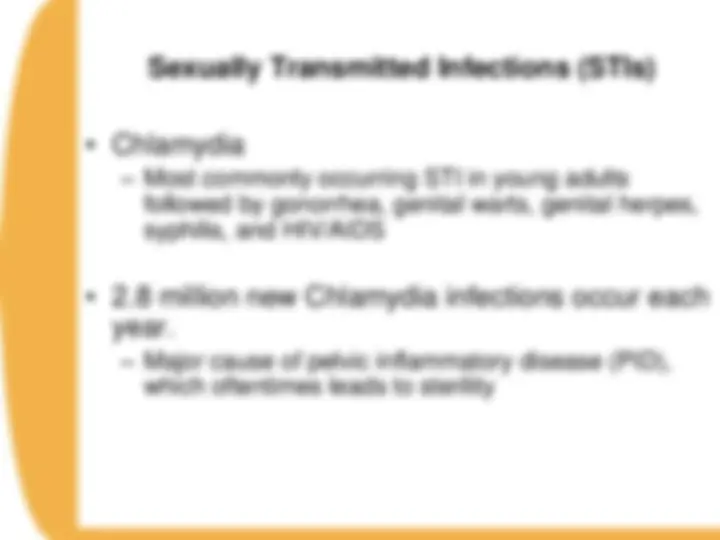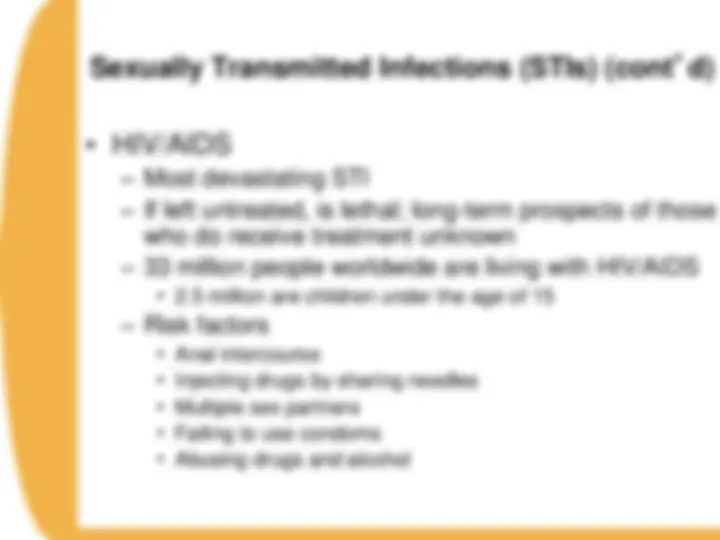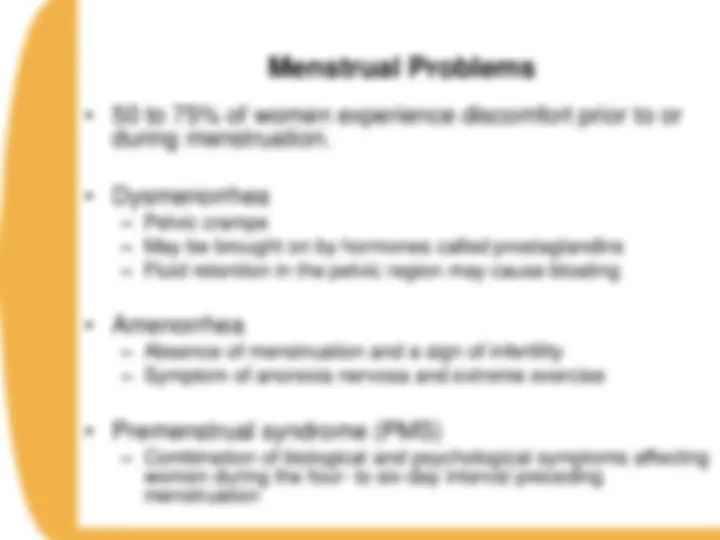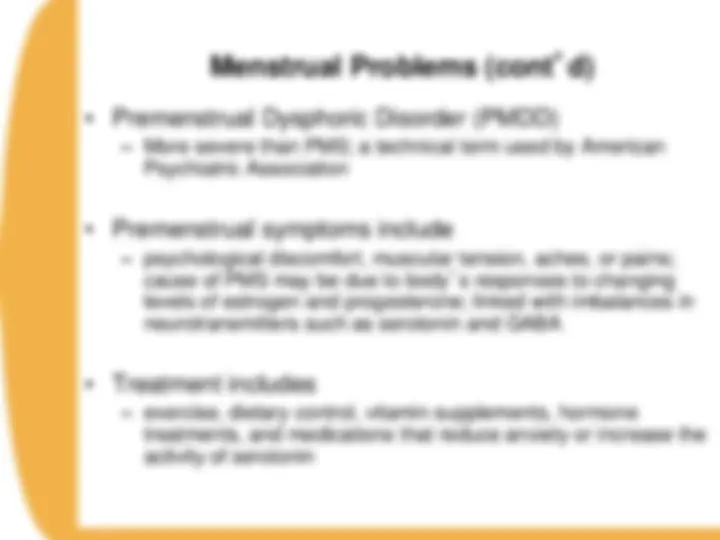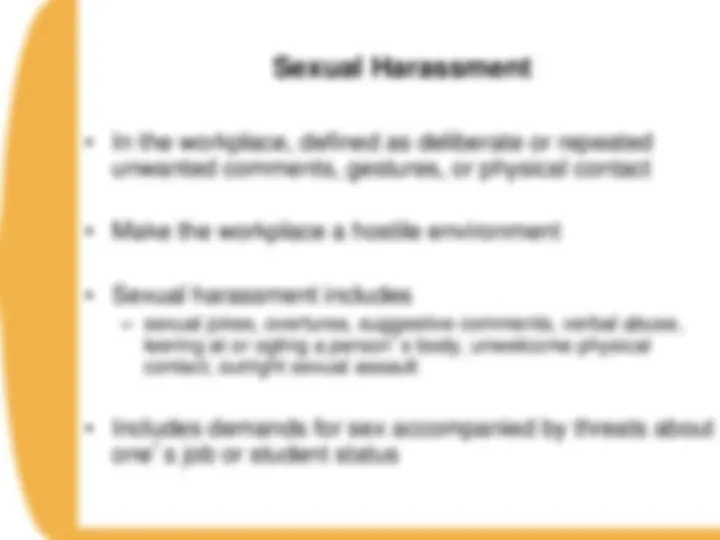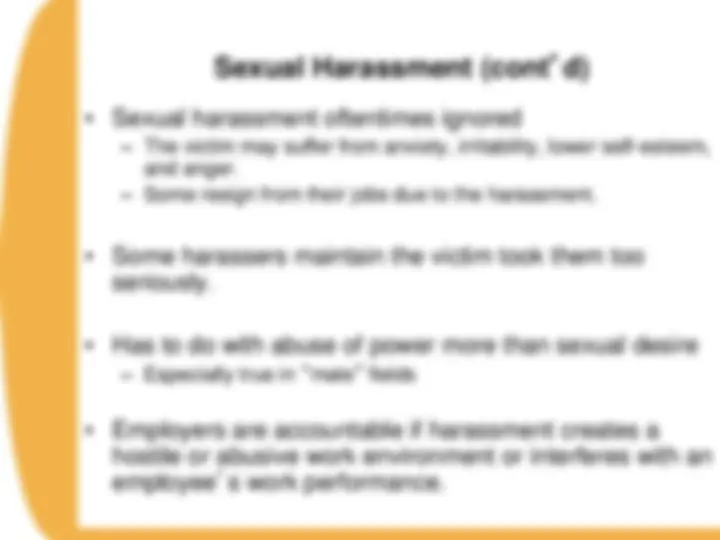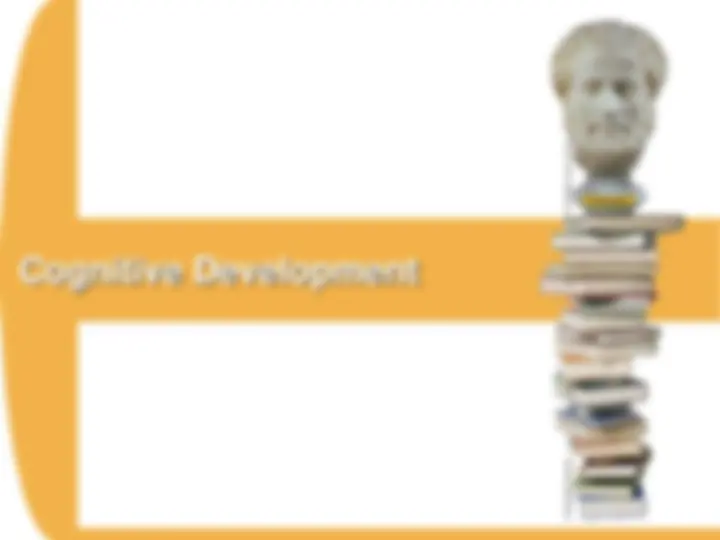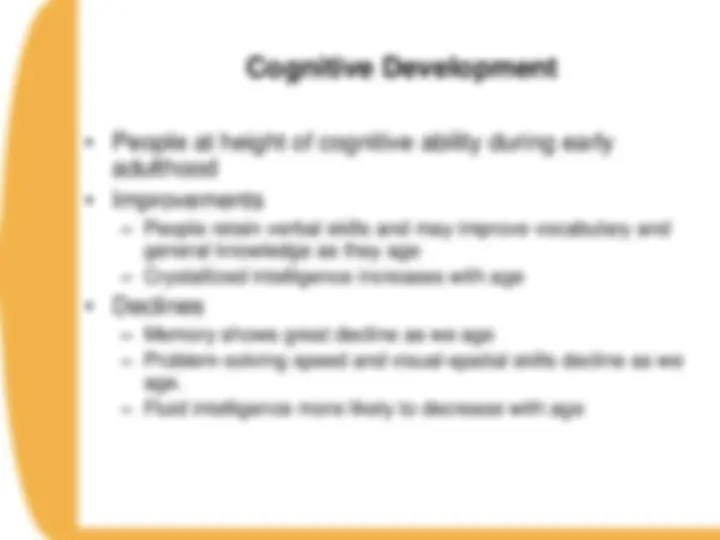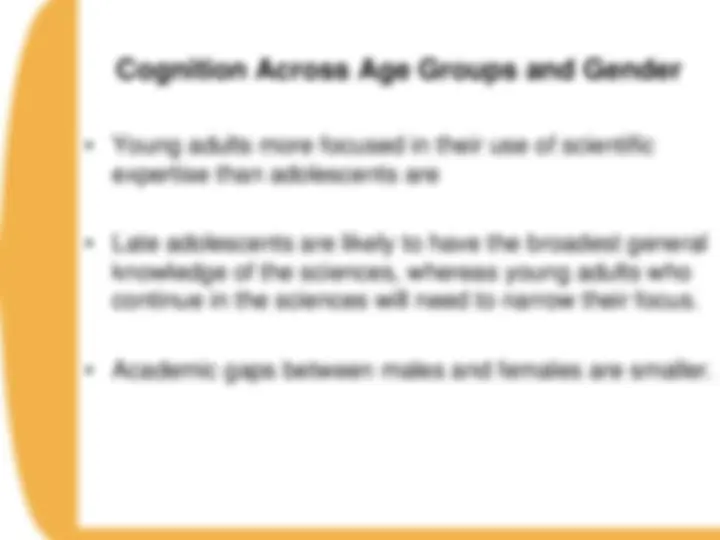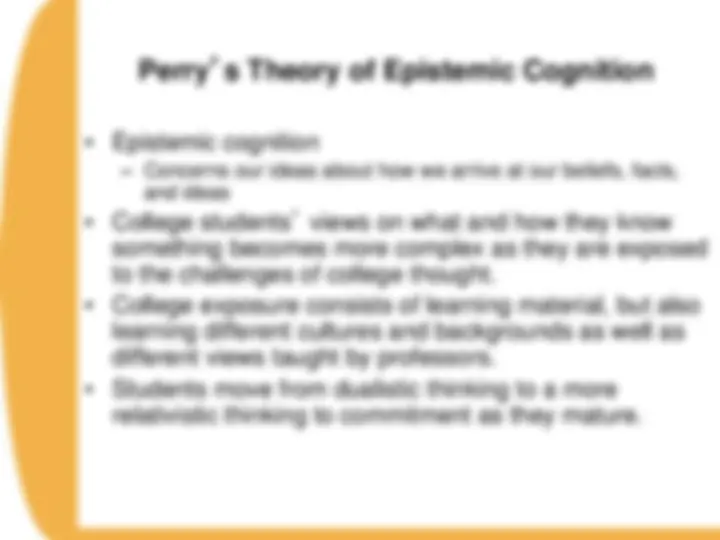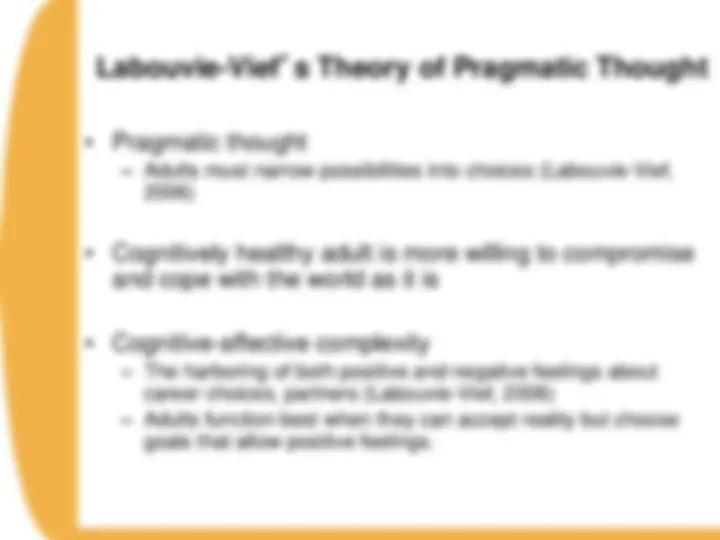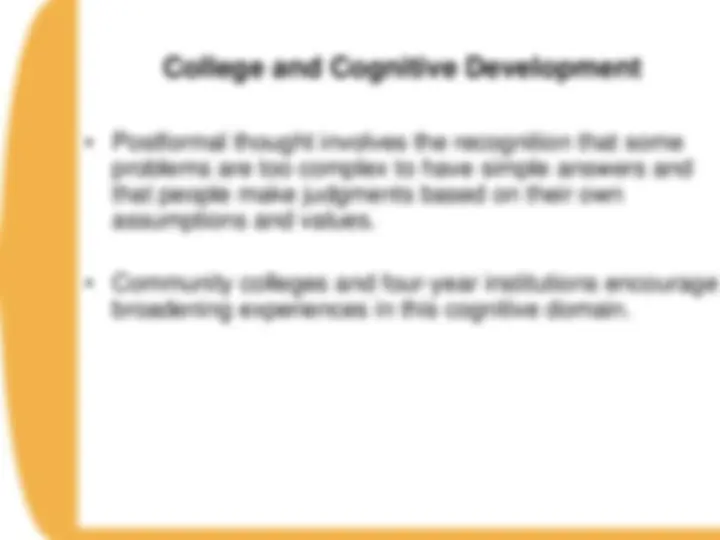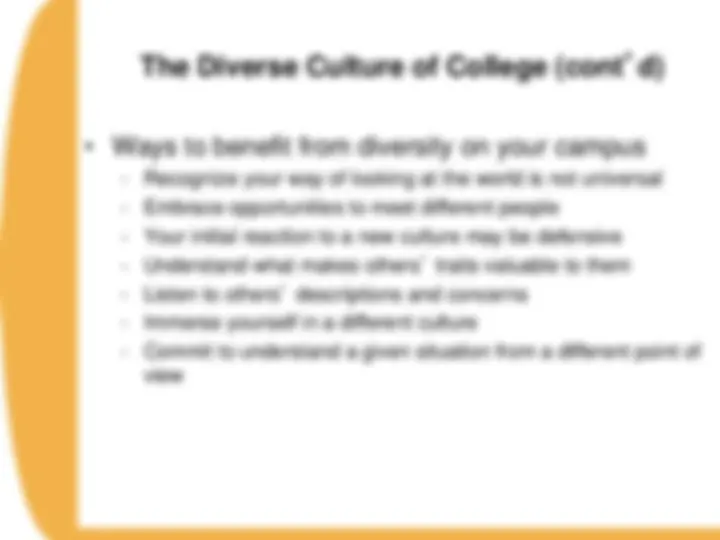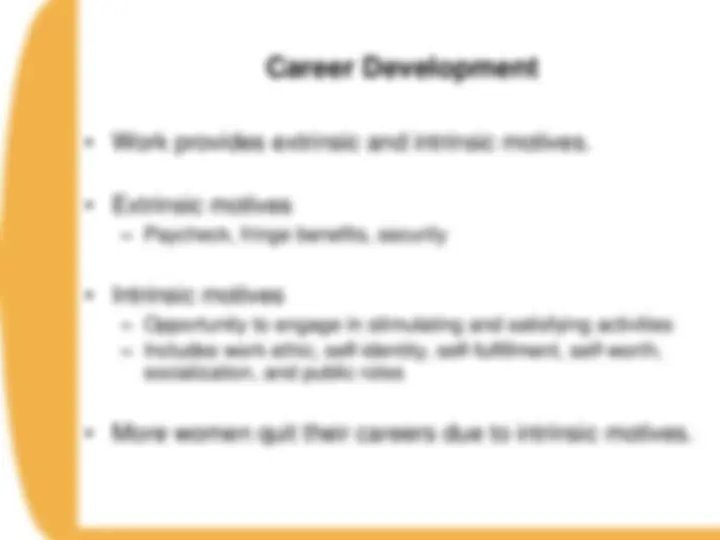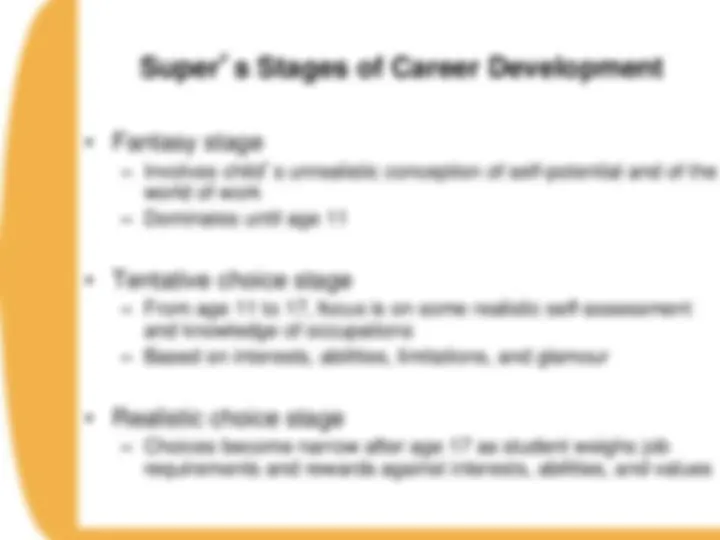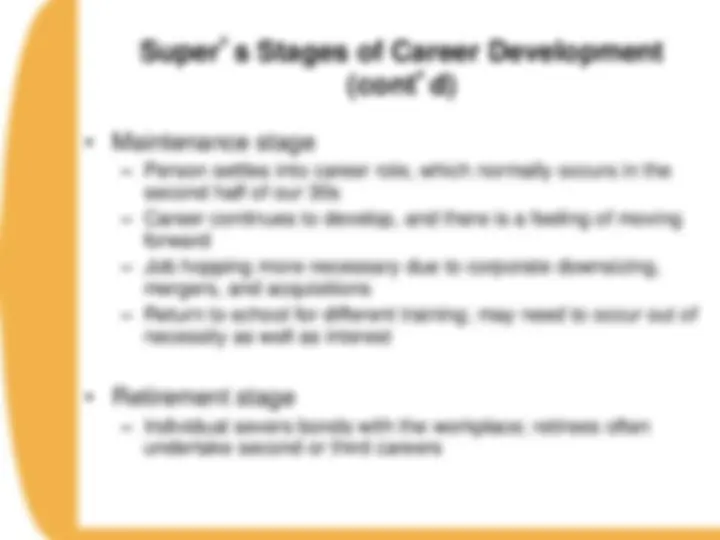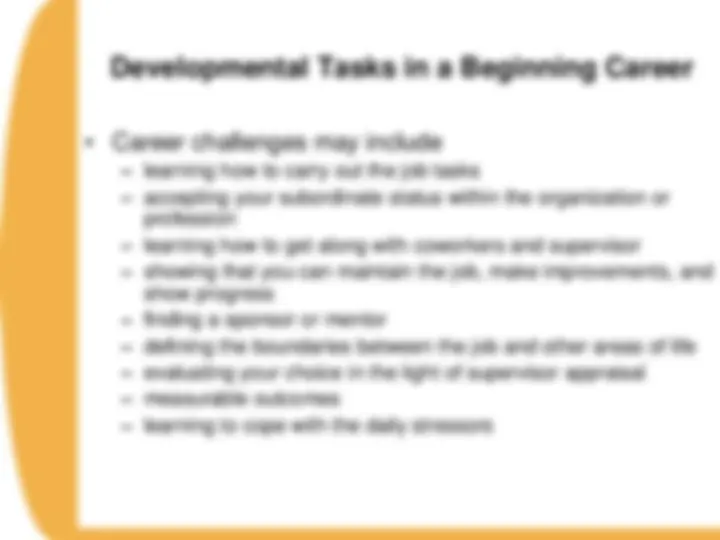Download Physical and Cognitive Development in Early Adulthood: A Comprehensive Overview and more Slides Psychology in PDF only on Docsity!
CHAPTER 13
Early Adulthood: Physical and
Cognitive Development
chapter
Emerging Adulthood
Physical Development
Physical Development
- Physical development peaks in early adulthood.
- (20’s and early 30’s) then declines
- Sensory sharpness peaks in early 20’s and then begins gradual
decline in middle adulthood
- Visual acuity remains good until middle adulthood.
- Decline leads to farsightedness and a need for reading glasses
- Hearing decline beginning in late 20’s/early 30’s
Physical Development (cont ’ d)
- Fertility decreases as both sexes age.
Women
- After age 35, pregnant women are checked for Down
syndrome and chromosomal abnormalities.
- Number of eggs in women are reduced and the
quality is not as good
- May still have healthy children into their 40’s
Men
- Older men may contribute to infertility as well.
Physical Development (cont ’ d)
- Both sexes may be graying and losing hair by end of
early adulthood
- Due to heredity, men may bald by mid 20’s.
- Skin may begin to loosen, grow less elastic, and wrinkle
- More so in women than in men
Health and Fitness
- Young adults tend to have healthy immune systems.
- Accidents most prominent reason for early death
- Further declines among 25- to 44-year-olds
- Homicide accounts for 13.9% of deaths of 25- to 44-
year-old men.
- Does not decline until 40 to 65 years of age
- Cancer and heart disease kill a much larger percentage
of people aged 25 to 44 than aged 15 to 24, but they
take second and third place behind accidents
- HIV/AIDS becomes leading cause of death among 25-
to 44-year-olds
Health and Fitness (cont ’ d)
- Many young adults do not take care of health and put it
on “back burner”
- 78% of young adults eat less fruits and vegetables than recommended
- 43% engage in no physical activity
- 29% are smokers
- 30% engage in binge drinking
- 26% are overweight
- 14% are obese
(McCracken et al., 2007)
Exercise
- Adults 18+ need 30 minutes of physical activity five or
more days a week.
- Breaking exercise into smaller segments is beneficial
- Reduces risk of developing or dying from
- cardiovascular disease
- type 2 diabetes
- certain cancers such as colon
- Exercise helps lower blood pressure and cholesterol,
prevents or retards osteoporosis and arthritis, and
reduces obesity.
- Benefits brain function and helps with some mental disorders
- Integrating exercise into daily routine best way
Effects of Depressants
- Depressants slow the nervous system.
- Include alcohol, narcotics derived from the opium poppy (heroine, morphine, and codeine), and sedatives (barbiturates and methaqualone)
- Alcohol effects
- Lowers inhibitions
- Binge drinking associated with bad grades and risky behavior such as unprotected sex, acts of aggression
- Distorts perceptions, impairs concentration
- Alcohol use most prevalent among 21- to 34-year-olds
- Over 2 million college students a year drive under the influence of alcohol.
- More than one million between the ages of 18 to 24 are accidentally injured while under the influence.
Effects of Depressants (cont ’ d)
- Barbiturates are addictive.
- In part due to their legitimate medical uses
- They are abused due to
- relaxing effects
- mild euphoric effects
Effects of Stimulants (cont ’ d)
- Cocaine produces feelings of euphoria, relieves pain,
boosts self-confidence, reduces the appetite
- Cocaine
- accelerates heart rate
- spikes the blood pressure
- constricts arteries of heart
- thickens blood
- can cause cardiovascular and respiratory collapse
- Cocaine overdoses can causes restlessness, insomnia,
tremors, and death.
Effects of Stimulants (cont ’ d)
- Tolerance for amphetamines develops quickly.
- Methamphetamine may be physically addictive.
- High doses can cause restlessness and insomnia, irritability, and loss of appetite
- Methamphetamine abuse can cause brain damage,
leading to problems with learning and memory.
- Smoking or injecting it can be associated with violent behavior


